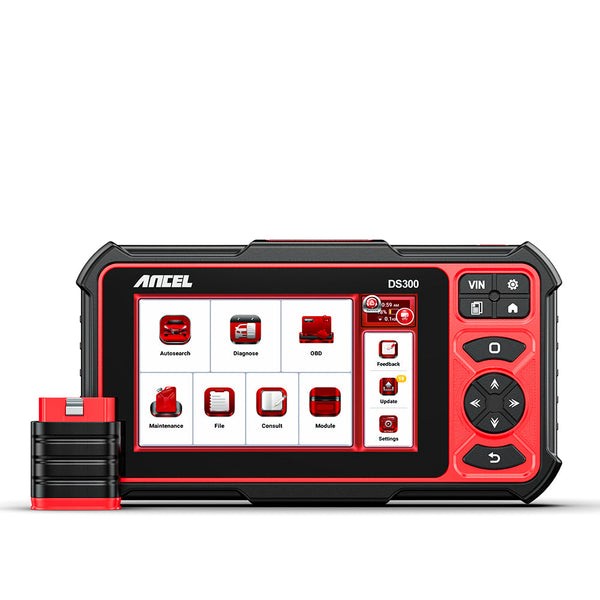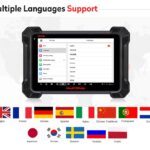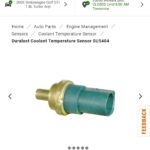Maintaining your vehicle’s engine for optimal performance and fuel efficiency often involves tasks beyond routine oil changes and tire rotations. One such crucial procedure is resetting the throttle body. The throttle body regulates the airflow into your engine, and when it malfunctions or gets clogged, it can lead to a host of performance issues. Fortunately, with the advent of technology, resetting your throttle has become more accessible than ever, thanks to Throttle Reset Obd2 Apps.
In this guide, we’ll delve into the importance of throttle resets, explore whether your vehicle can automatically relearn throttle positions, and provide a step-by-step approach to using an OBD2 app for throttle reset. We will also highlight why using an OBD2 app is a game-changer for modern car maintenance, offering convenience and efficiency right at your fingertips.
Understanding Throttle Reset and Why It’s Crucial
The throttle body is a critical part of your vehicle’s engine management system. It acts like a valve, controlling the volume of air that enters the engine’s combustion chambers. This air is then mixed with fuel to create the combustion needed for your car to run. A precise air-fuel mixture is essential for engine power, efficiency, and smooth operation.
Over time, the throttle body can accumulate dirt, carbon deposits, and grime. This buildup can disrupt the airflow and cause the throttle position sensor (TPS) to misread, leading to various engine problems, including:
- Rough Idling: Your engine may idle unevenly or at an incorrect RPM due to an imbalanced air-fuel mixture.
- Hesitation During Acceleration: You might experience sluggish acceleration or a noticeable delay when you press the accelerator pedal.
- Decreased Fuel Economy: To compensate for restricted airflow, your engine might consume more fuel, leading to lower miles per gallon.
- Increased Emissions: An improper air-fuel ratio can result in incomplete combustion, leading to higher levels of harmful emissions.
- Engine Stalling: In severe cases, a malfunctioning throttle body can cause the engine to stall, especially when slowing down or idling.
Resetting the throttle body becomes necessary to recalibrate the Engine Control Module (ECM). The ECM relies on input from the TPS to manage the throttle plate’s position. When the throttle body is cleaned, repaired, or replaced, the ECM might still hold onto outdated information about the throttle’s position. This discrepancy can cause performance issues as the ECM tries to control the throttle based on incorrect data.
By performing a throttle reset using an OBD2 app, you clear this old data, forcing the ECM to relearn and adapt to the current throttle position. This ensures that your engine operates with the most accurate information, restoring optimal performance. For instance, if you own a Ford F-150 and notice rough idling after cleaning the throttle body, a reset is crucial for the ECM to relearn the correct idle position.
Can Your Car Relearn Throttle Position Automatically?
While some modern vehicles are designed to automatically relearn the throttle position after cleaning or replacement, this isn’t always guaranteed, or it might not happen effectively. The automatic relearn process depends on several factors, including the vehicle’s make, model, and the complexity of its engine management system.
Automatic relearning usually involves a specific procedure, such as idling the engine for a set period or driving at consistent speeds. This allows the ECM to gather new data from the TPS and adjust accordingly. For example, a newer Chevrolet Silverado might initiate relearning by requiring you to idle the vehicle for a few minutes, followed by driving at a steady speed around 40 mph for a certain distance. During this time, the ECM monitors and fine-tunes the throttle position.
However, automatic relearning isn’t foolproof. Factors like environmental conditions, engine modifications, or even software glitches can prevent successful automatic relearning. In vehicles like a performance-tuned Dodge Charger, automatic relearning might fail, leading to persistent issues like engine stalling or erratic acceleration. In such cases, a manual reset using an OBD2 app becomes essential to ensure proper throttle body calibration.
Recognizing When You Need a Throttle Reset: Key Symptoms
Knowing when to perform a throttle reset can save you from potential engine performance issues. Here are several symptoms that indicate your vehicle might need a throttle reset:
- Engine Stalling: The engine abruptly shuts off, especially when decelerating or at idle. This is often seen in vehicles like a Toyota Camry after throttle body cleaning.
- Erratic Acceleration: Inconsistent or jerky acceleration, where the car surges or hesitates unexpectedly. Honda Civic owners have reported this after throttle body maintenance.
- Check Engine Light: The appearance of a check engine light, often accompanied by diagnostic trouble codes (DTCs) related to the throttle position sensor, such as P0121. This can occur in models like the Ford Escape after throttle body service.
- Poor Fuel Economy: A noticeable decrease in fuel efficiency, as the engine works harder to maintain the correct air-fuel mixture. Nissan Altima owners have observed increased fuel consumption with an uncalibrated throttle body.
- Rough or High Idle: The engine idles roughly or at an unusually high RPM, indicating incorrect throttle positioning.
If you experience any of these symptoms, especially after cleaning or servicing your throttle body, performing a throttle reset using an OBD2 app should be high on your troubleshooting list.
 Truck Scanner | ANCEL
Truck Scanner | ANCEL
Alt text: ANCEL DS300 bidirectional OBD2 scanner displaying its truck scanning capabilities, ideal for throttle resets and comprehensive vehicle diagnostics.
Throttle Reset with OBD2 Apps: A Step-by-Step Guide
Using an OBD2 app for throttle reset is a straightforward process, especially when you have the right tool. Here’s a general step-by-step guide on how to perform a throttle reset using an OBD2 app and a compatible OBD2 scanner:
- Prepare Your OBD2 App and Scanner: Ensure you have downloaded a reliable throttle reset OBD2 app on your smartphone or tablet and have a compatible OBD2 scanner. Popular options include apps that work with scanners like the ANCEL DS300 or similar Bluetooth OBD2 readers.
- Connect the OBD2 Scanner: Locate the OBD2 port in your vehicle—typically found under the dashboard, near the steering column. Plug your OBD2 scanner into this port.
- Turn on Ignition (Engine Off): Turn your vehicle’s ignition to the “ON” position. This powers up the car’s electronics without starting the engine.
- Pair Scanner with OBD2 App: If your scanner uses Bluetooth, pair it with your smartphone or tablet via the OBD2 app. Follow the app’s instructions to establish a connection.
- Navigate to Throttle Reset Function: Open your OBD2 app and navigate to the diagnostic or service functions. Look for options like “Service Reset,” “Special Functions,” “Actuation Test,” or “ECM/PCM Control.” Within these menus, find the “Throttle Reset,” “Throttle Body Relearn,” or similar function. The exact wording may vary depending on the app and your vehicle’s make and model.
- Initiate the Reset Process: Select the throttle reset function in the app. The app will communicate with your vehicle’s ECM to clear the existing throttle position data. Follow any on-screen prompts carefully. You may be instructed to ensure the ignition is in the correct position or that no other vehicle systems are in operation.
- Complete the Relearn Procedure: The OBD2 app may guide you through a relearn procedure. This often involves idling the engine for a specific duration or performing certain driving maneuvers at steady speeds. Follow these instructions precisely to allow the ECM to properly relearn the throttle position.
- Verify the Reset: After the process is complete, use the OBD2 app to check the TPS data. Look for real-time data or live data streams within the app. Verify that the throttle position readings are now accurate and responding correctly.
- Test Drive: Finally, take your vehicle for a test drive to confirm the throttle reset was successful. Pay attention to engine idling, acceleration, and overall responsiveness. You should notice improvements in engine smoothness and performance.
Top Throttle Reset OBD2 Apps to Consider
Choosing the right OBD2 app for throttle reset is crucial for an effective and hassle-free experience. While specific app recommendations can vary based on your vehicle and scanner, here are general types and features to look for:
- Professional Diagnostic Apps: Apps designed for professional mechanics often offer advanced functions, including throttle reset, and are compatible with a wide range of vehicles. Examples include apps that work with professional scanners like the ANCEL DS300 series.
- Vehicle-Specific Apps: Some apps are tailored to specific vehicle brands or manufacturers. These can offer more precise and reliable throttle reset functions for those makes. Check if there are recommended apps for your car’s brand.
- Multi-Function OBD2 Apps: Many OBD2 apps provide a range of diagnostic and service functions beyond throttle reset, such as reading and clearing codes, live data monitoring, and other reset services like oil reset, brake reset, etc. Apps like Torque Pro, OBD Fusion, or Car Scanner ELM OBD2 (with appropriate add-ons or scanner compatibility) can be versatile options.
- User-Friendly Interface: Opt for apps with a clear, intuitive interface. A well-designed app will make navigating to the throttle reset function and following instructions much easier, especially for DIY users.
- Compatibility and Support: Ensure the app is compatible with your OBD2 scanner and your vehicle’s make, model, and year. Check for user reviews and support documentation to confirm compatibility and reliability.
When selecting an app, consider reading user reviews and checking compatibility lists to ensure it meets your specific needs and vehicle requirements.
Maximizing Your OBD2 App for Throttle Resets and Beyond
Investing in a good throttle reset OBD2 app and scanner offers benefits far beyond just throttle resets. These tools can become invaluable for routine vehicle maintenance and diagnostics. Here are some additional ways you can maximize your OBD2 app:
- Regular Diagnostics: Use your OBD2 app to regularly scan your vehicle for diagnostic trouble codes. Catching issues early can prevent more significant and costly repairs down the line.
- Live Data Monitoring: Monitor real-time engine data, such as coolant temperature, RPM, oxygen sensor readings, and more. This can help you understand your engine’s health and performance.
- Other Service Resets: Many OBD2 apps offer various service reset functions beyond throttle reset, including oil life reset, brake pad reset, battery registration, and more. Explore these features to perform routine maintenance tasks yourself.
- Performance Monitoring: Some apps can track performance metrics like acceleration times, horsepower, and torque. This can be useful for enthusiasts who want to monitor their vehicle’s performance.
- Customization and Tuning: Advanced OBD2 apps might offer customization or tuning options, allowing you to adjust certain engine parameters (use with caution and expertise).
By familiarizing yourself with the full capabilities of your OBD2 app, you can take a proactive approach to vehicle maintenance, save money on diagnostic fees, and ensure your car runs smoothly for years to come.
Conclusion
Resetting the throttle body is a vital maintenance step that can significantly enhance your vehicle’s performance and fuel efficiency. With the convenience of throttle reset OBD2 apps, this task has become more accessible for car owners and DIY enthusiasts alike. By using an OBD2 app and a compatible scanner, you can effectively recalibrate your vehicle’s ECM, ensuring accurate throttle positioning and optimal engine operation.
Whether you are addressing symptoms like rough idling, poor acceleration, or simply performing routine maintenance, mastering the use of an OBD2 app for throttle reset is a valuable skill. It empowers you to take control of your vehicle’s health, ensuring a smoother, more efficient, and enjoyable driving experience. Embrace the technology and keep your engine running at its best with the help of OBD2 apps.
FAQs
Is it possible to reset the throttle body without disconnecting the battery when using an OBD2 app?
Yes, using an OBD2 app for throttle reset eliminates the need to disconnect the battery. The app communicates directly with the ECM to perform the reset, preserving your vehicle’s settings.
Can a dirty air filter impact the throttle body and necessitate a reset, even with OBD2 app?
Yes, a dirty air filter can restrict airflow, leading to imbalances that affect the throttle body and potentially require a reset. While an OBD2 app can reset the throttle, maintaining a clean air filter is essential for preventing future issues.
After installing a new air intake system, is a throttle body reset needed, and can an OBD2 app help?
Absolutely. Installing a new air intake system alters airflow dynamics. A throttle body reset is often necessary to optimize engine performance in these cases, and an OBD2 app is the most efficient way to perform this reset and ensure your ECM adapts to the new airflow conditions.

